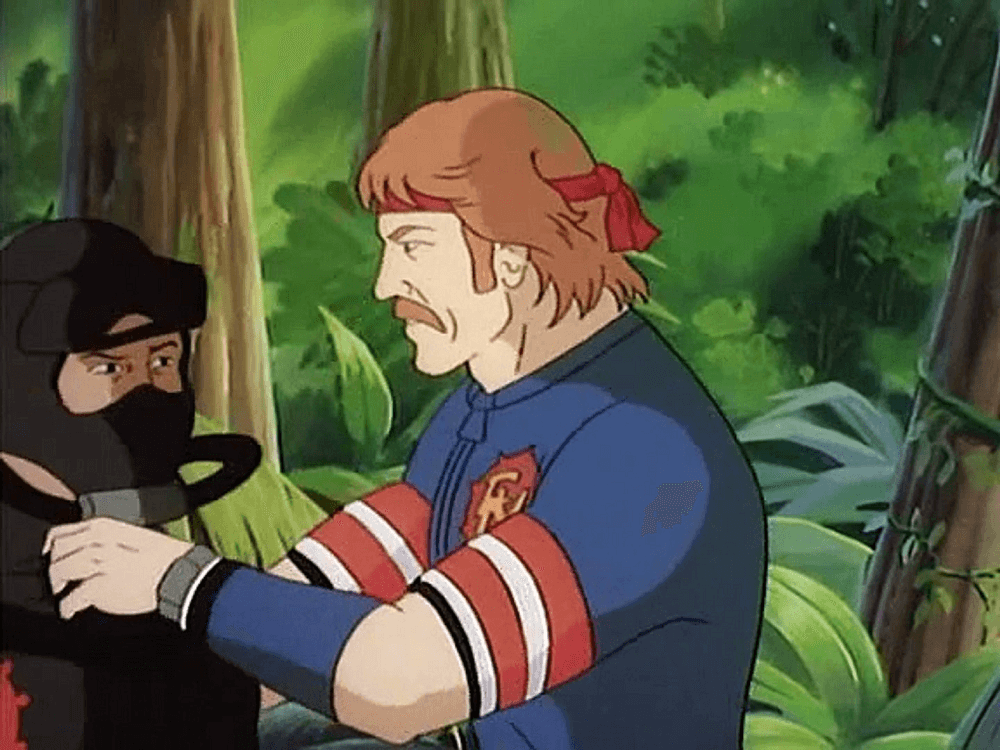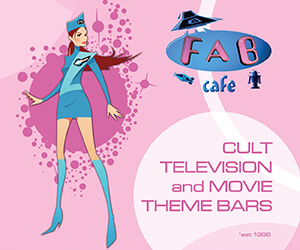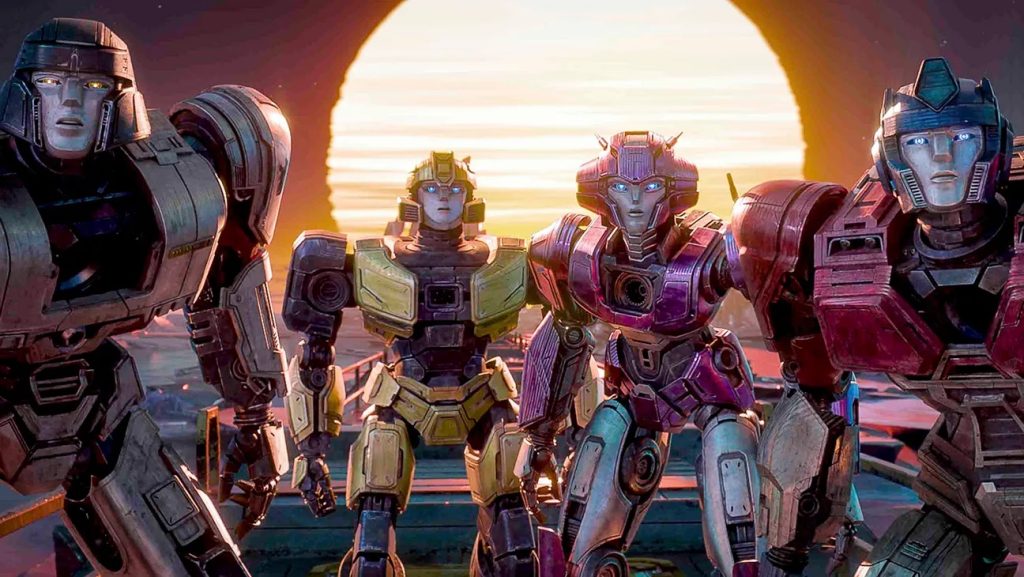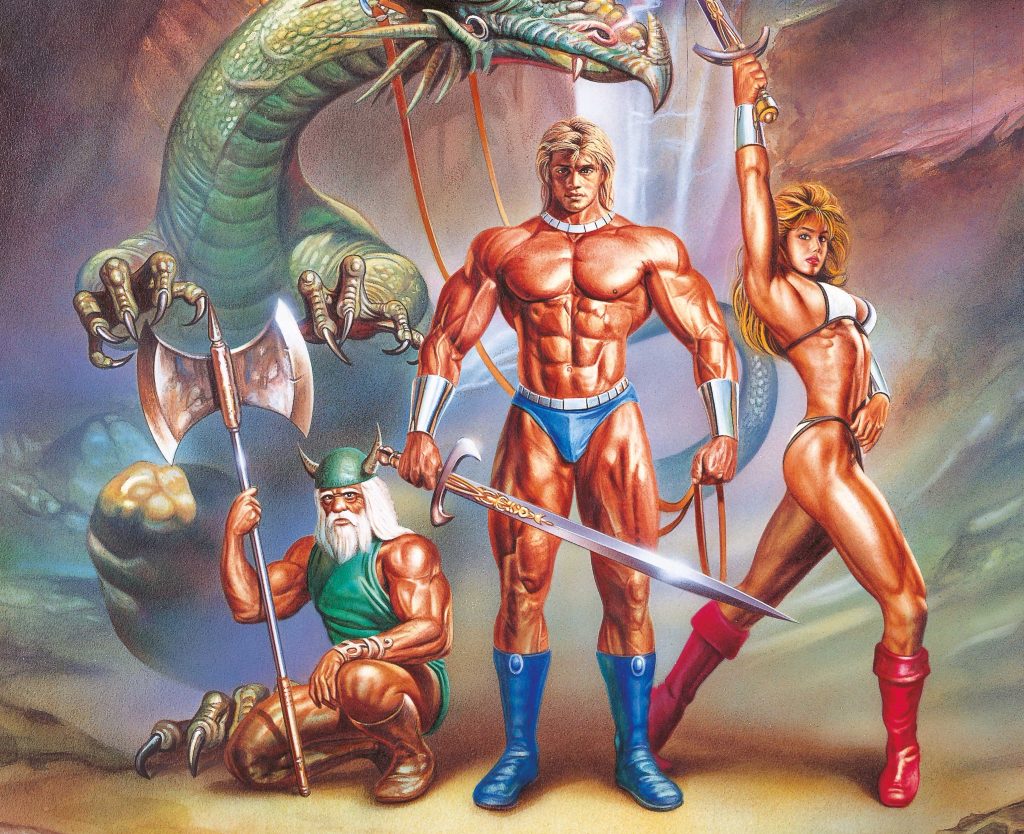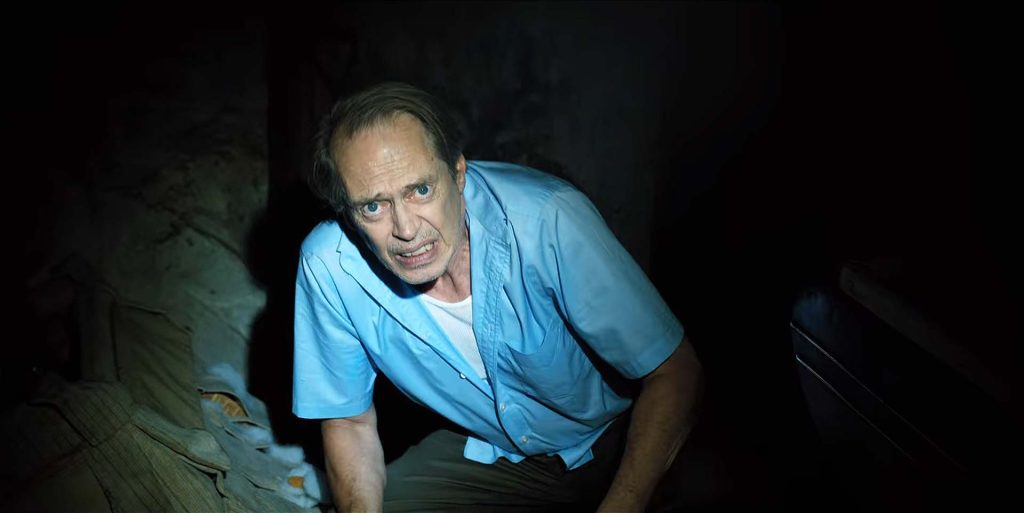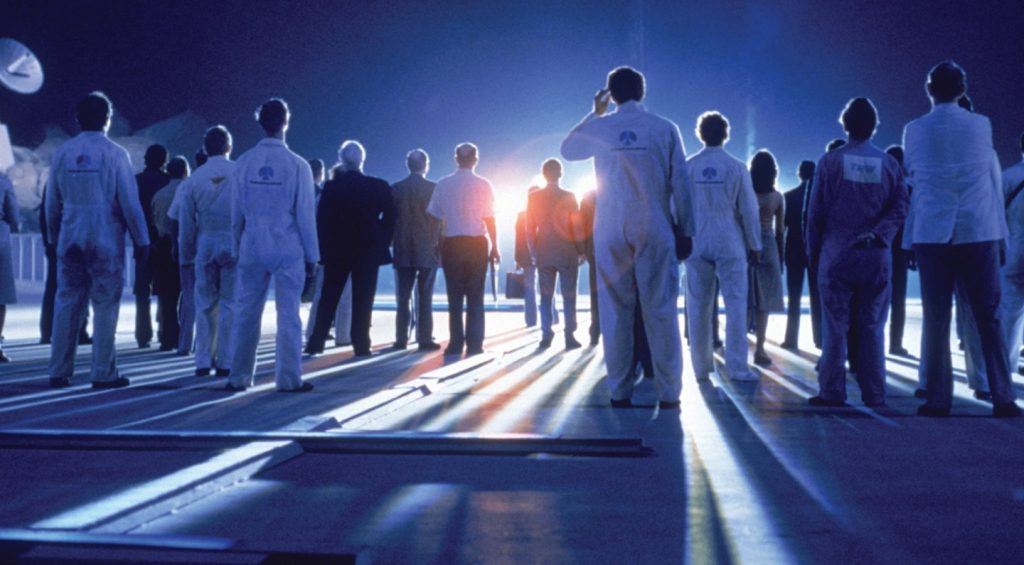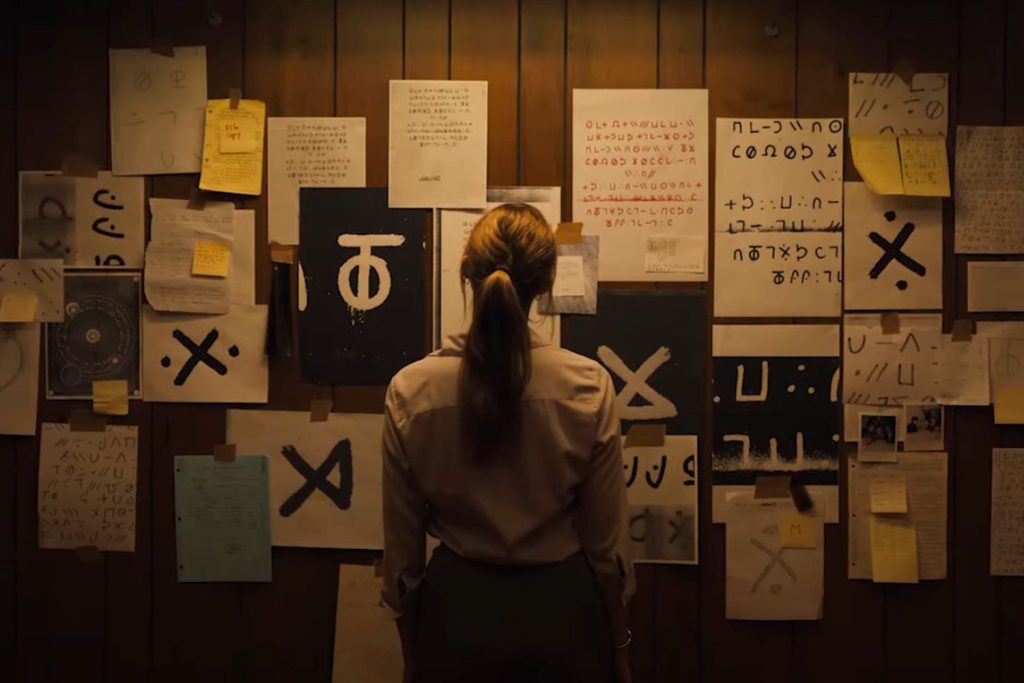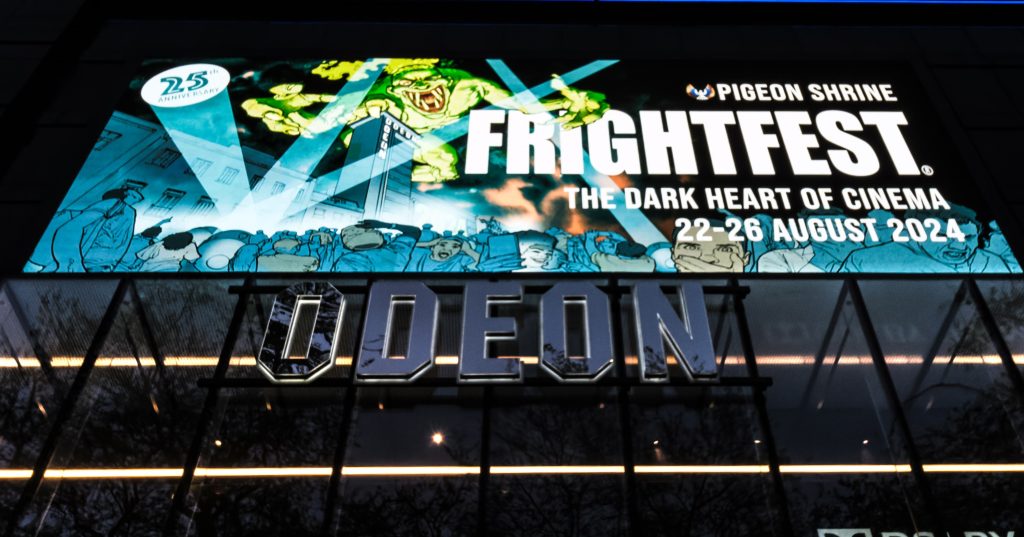Ah, telephemera… those shows whose stay with us was tantalisingly brief, snatched away before their time, and sometimes with good cause. Dedicated miners of this fecund seam begin to notice the same names cropping up, again and again, as if their whole career was based on a principle of throwing stuff at the wall and seeing what sticks. What’s more, it isn’t all one-season failures and unsold pilots, there’s genuine gold to be found amongst their hoards; these men are surely the Titans of Telephemera!
RUBY-SPEARS
Joe Ruby and Ken Spears met while employed as sound editors at Hanna-Barbera, teaming up to become writers for the studio. After working on such shows as The Herculoids, Space Ghost, and The Perils of Penelope Pitstop, the pair were asked to come up with a new show for Hanna-Barbera which would embody the spirit of hit comic book adaptation The Archies. After a lengthy working out period (see The Telephemera Years: 1969 – part 4), they eventually came up with Scooby Doo, Where Are You! but left Hanna-Barbera soon afterwards when it became clear they were not going to be promoted to associate producers.
Going freelance didn’t mean they stopped working for H-B – they scripted episodes of Help!… It’s the Hair Bear Bunch!, The Funky Phantom, and Dynomutt, Dog Wonder amongst others – but they also wrote for DePatie-Freleng, producing The Barkleys, The Houndcats, and Bailey’s Comets. In 1977, while working at ABC where they were in charge of Saturday morning programming, Joe and Ken formed Ruby-Spears Productions at the request of ABC President Fred Silverman. Silverman was concerned that Hanna-Barbera had little competition for Saturday morning cartoons and thought that the market could bear a little shaking up; a year later, on September 9th 1978, the first fruits of the new studio hit the air…
Fangface (ABC, 1978): A straight-up mix of Scooby Doo and I Was a Teenage Werewolf, Fangface was given the prized post-Scooby 8.30am slot on Saturday mornings on ABC, perfect for retaining an audience of mystery-hungry seekers of the supernatural. The titular lycanthrope was the hapless Sherman Fangsworth, the latest in a tradition that saw a werewolf born into his family every 400 years, cursed to turn hairy at the sight of a full moon but fully unaware of his dual nature.
“Fangs,” as he was known, travelled with three friends in a souped-up convertible they called the Wolf Buggy, solving mysteries in a fashion familiar to fans of Ruby-Spears earlier creation (or any number of clones that followed in its wake). Sherman and best pal Puggsy were based on Leo Gorsey and Huntz Hall from the 1940s comedy film series starring the Bowery Boys, but this anachronism was made up for the very modern Biff and Kim, assumed to be an interracial couple and very much the Fred and Daphne of the crew. The usual formula would find the team stumbling over a mystery that can only be solved by the transformation, often against his will, of Fangs into Fangface, a Tasmanian Devil-like force of nature who always leaves a trail of (non-violent, non-gory) destruction in his wake.
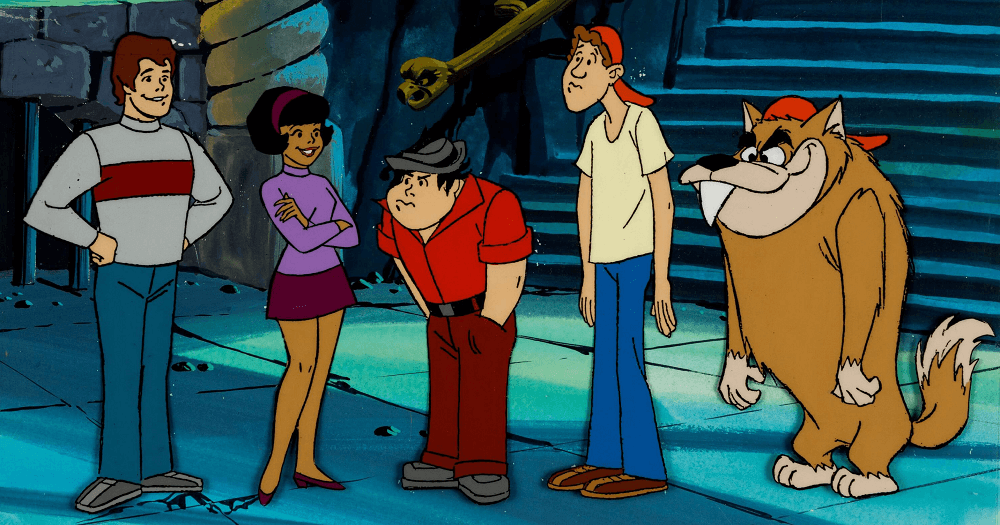
With just the sight of a full Moon enough to trigger his transformations, the crew took to carrying around pictures of one, alongside a picture of a Sun to bring him back to human, and the first season of sixteen episodes saw them employ this tactic to help stop space spiders, dinosaurs, evil Swamis, and the king of Atlantis. Fangface leaned more towards the super-hero end of the scale, its villains leaning more towards James Bond-style schemes than scaring kids away from an abandoned theme park or trying to steal an inheritance. This meant that, when it was renewed for a second season, it was as part of a package with Plastic Man, Mighty Man and Yukk, and Rickety Rocket as The Plastic Man Comedy/Adventure Hour (see The Telephemera Years: 1979, when we get there!).
The second season saw the introduction of Fangs’s baby nephew, who could also turn into a werewolf (dubbed Fangpuss) and who was similarly unaware that he – and his uncle – had such an ability. As usual, the addition of a new baby proved to be the death knell for the show, despite the team heading off the threats of mist monsters, evil scientists, amorous robot werewolves, and an alien filmmaker determined to blow Earth up as a special effect for his latest movie. Fangface was an inventive show that went beyond its derivative elevator pitch, but Ruby-Spears had little time to mourn its passing. As well as The Plastic Man Comedy/Adventure Show, the Jack Kirby-designed Thundarr the Barbarian, and the cat and vampire dog show Heathcliff and Dingbat, they were about to be sold by parent company Filmways to Taft Broadcasting and become partner studios with… Hanna-Barbera.
Goldie Gold and Action Jack (1981): Although they both fell under the aegis of Taft Broadcasting, Ruby-Spears and Hanna-Barbera maintained their separate operations, and Joe and Ken got on with their twin attack on the 1981 Fall TV schedules, Alongside a retooled Heathcliff and Marmaduke, pairing everyone’s second favourite orange cartoon cat with the dog that stole Blondie’s strip from under her, they brought Goldie Gold and Action Jack to ABC, debuting on September 12th as part of an hour long block with the second season of Thundarr.
Goldie Gold was a beautiful heiress whose parents had left her a newspaper – The Gold Street Journal – when they died. Voiced by Judy Strangis (who’d played teen sidekick Dyna Girl in Sid and Marty Krofft’s live-action Electra Woman and Dyna Girl show), Gold travelled the world with her cocker spaniel Nugget and ace reporter boyfriend “Action” Jack Travis (Sonny Melendrez), always finding the story (and usually someone who needs their help). The show was developed by former Marvel Comics writer Steve Gerber, with Jack Kirby’s former assistant Mark Evanier and ex-DC Comics staffer Martin Pasko pitching in and was one of only a handful to star a female action hero, albeit one with a huge dollop of testosterone in Jack on the side.
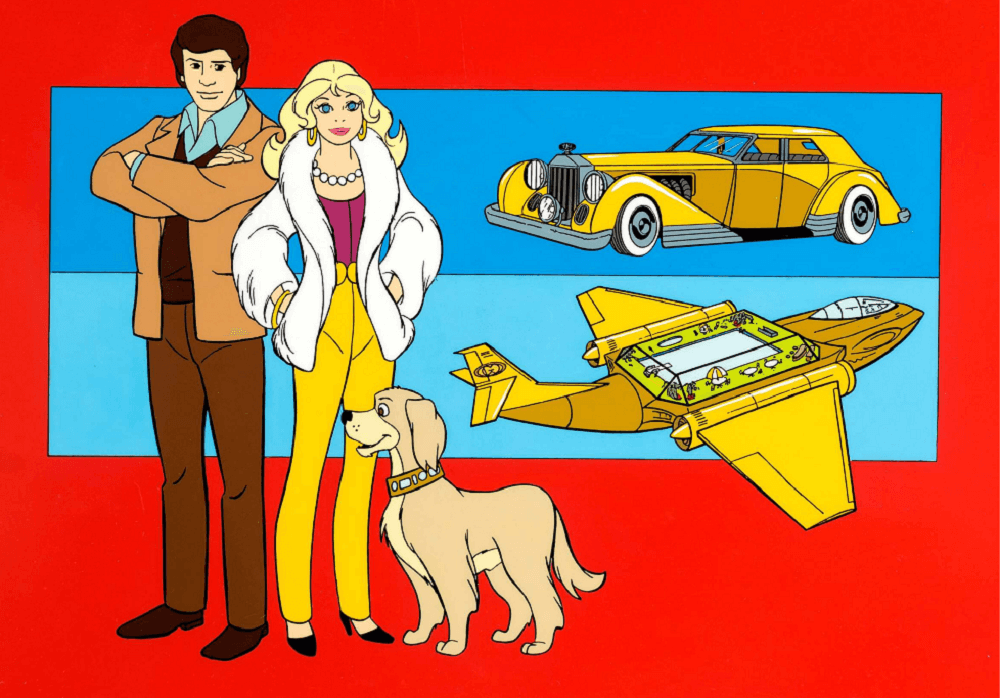
Gerber had come on board the Ruby-Spears train with The Plastic Man Comedy/Adventure Show in 1979 after growing disillusioned with comic books, and would stay with the studio through successive years, writing for The Scooby & Scrappy-Doo/Puppy Hour in 1982, and co-creating Mister T with Pasko in 1983 (and for details on that, check out The Telephemera Years when we make it to 1983). Sadly, like the female-fronted Jana of the Jungle (which Hanna-Barbera had brought to NBC in 1978), Goldie Gold and Action Jack lasted just a single season of thirteen episodes and has yet to be collected on DVD. The complete series has been uploaded to YouTube, however, and makes for fun viewing as you watch Goldie (and Jack) foil the plans of The Crystal Skull, a disembodied glove, a race of lizard-like mutants, and an undead king bent on turning Goldie into his queen.
For Ruby-Spears, while the new season did not bring more Goldie Gold and Action Jack, there was the new Scooby Doo show and Mork & Mindy on ABC, with 1983 bringing Rubik the Amazing Cube and The Puppy’s Further Adventures for the alphabet network, as well as Mister T and Alvin and the Chipmunks for NBC, and Saturday Supercade on CBS. 1984 had them debut Dragon’s Lair and body horror nightmare Turbo Teen but it was a pair of action shows on the schedule for 1985 that saw them enter a brand-new world: the toy tie-in…
Sectaurs (syndication, 1985): Inspired by prime-time TV’s experiments with the format in the late 1970s, and by comic books’ adoption of shorter story runs in the early 1980s, it wasn’t uncommon for some animated series – especially those designed to sell an unproven action figure – to begin life as a mini-series. Both GI Joe and Transformers started out with limited runs to test the water, with both progressing to long-running, full-season stretches after kids tuned in (and bought toys) in droves, and in 1985 it was decided that Sectaurs, a line of insect-themed humanoid action figures from Coleco, should be given the same treatment.
Ruby-Spears were given the task of bringing these lumps of colourful plastic to life and hired Dan DiStefano (who’d cut his teeth on Sport Billy for DIC) to helm the project. DiStefano brought in He-Man and the Masters of the Universe writer Janis Diamond to help shape the mythology for the series, which told of an eternal battle between the Shining Realm of Prosperon – led by the noble Prince Dargon – and the evil Dark Domain of Synax, under the thumb of Empress Devora.
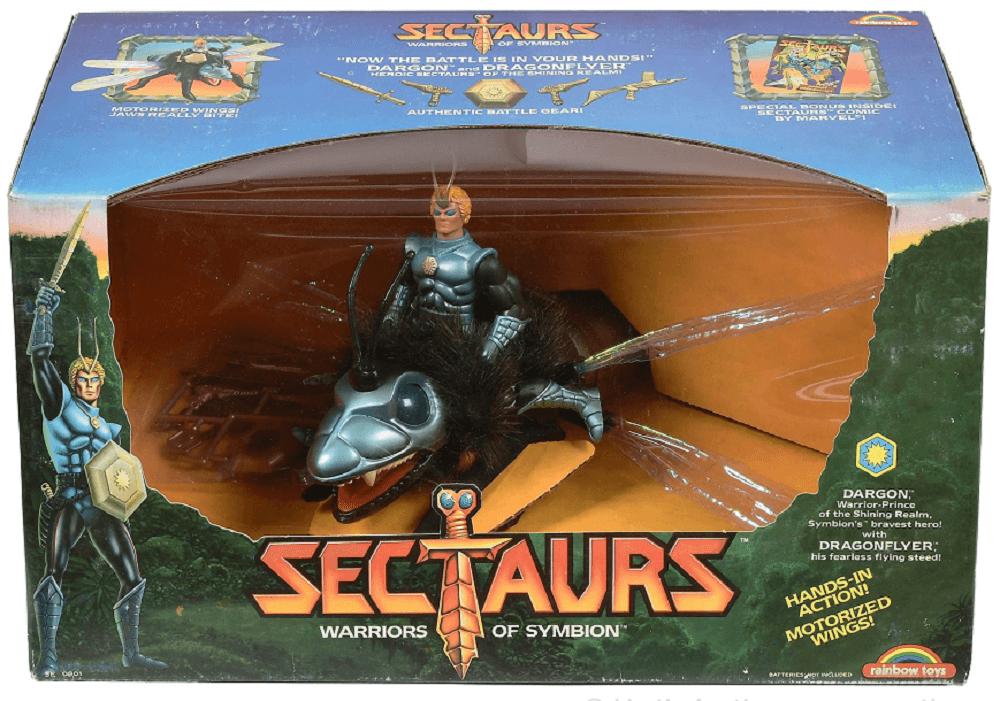
Dargon was joined by the Heroic Sectaurs of the Shining Realm, all aboard insectoid steeds (replicated in action figure form by a unique glove puppet gimmick), combatting General Spidrax and his evil army, their story laid out across five episodes, the first of which – “Spydrax Attacks” – debuted on September 14th 1985. The show was sold in syndication by Worldvision Enterprises, accompanied by a Marvel comic book which launched in June, all ready to convince kids across America to badger their parents for something insectoid (or arachnoid, we don’t discriminate here at STARBURST) in their Christmas stockings.
Unfortunately, due to a combination of a higher price point than their competitors and the slightly scary nature of even the heroic characters, the action figure line failed to take off, meaning there would be no full series for Sectaurs. The comic book limped on through September 1986 and there have been attempts in recent years to revive the line by longtime fans, but no further installments in the story of the war between Prosperon and Synax have been told. Sectaurs: The Warriors of Symbion has never been released on DVD but it is available to watch on YouTube, allowing you to recreate the action on screen with your vintage action figures (or the 2021 re-imaginings from Zica Toys).
The Centurions (syndication, 1985): While Sectaurs failed to hit its mark with either a TV audience or the toy buying public, Ruby-Spears other entry into the toy tie-in market in 1985 earned much bigger rewards with both, perhaps because the two were designed to be symbiotic from the off. With initial designs by comic book legends Jack Kirby and Gil Kane, Centurions was a co-production of Ruby-Spears and Kenner Toys, animated in Japan by Studio 7. The five-part mini-series, which laid out the toy line’s basic story, debuted in syndication across five nights from April 7th 1986, sold – like Sectaurs – by ABC’s syndication arm, Worldvision Enterprises.
This time, the story of Max Ray, Jake Rockwell, and Ace McCloud – representing sea, land, and air combat specialities – and their battle with the evil cyborgs of Doc Terror proved popular, with the modular attachment gimmick that the toys embraced a novel addition to the action figure aisles. Ray, Rockwell, and McCloud were based on an orbiting space station, sent by operations manager Crystal Kane to combat Terror whenever he and his minions raised their heads. Each man wore a suit of armour which allowed them to attach any number of weapons and propellants, making them more than a match for their hybrid hostiles, shouting “POWER…. XTREME!” as they charged into action.
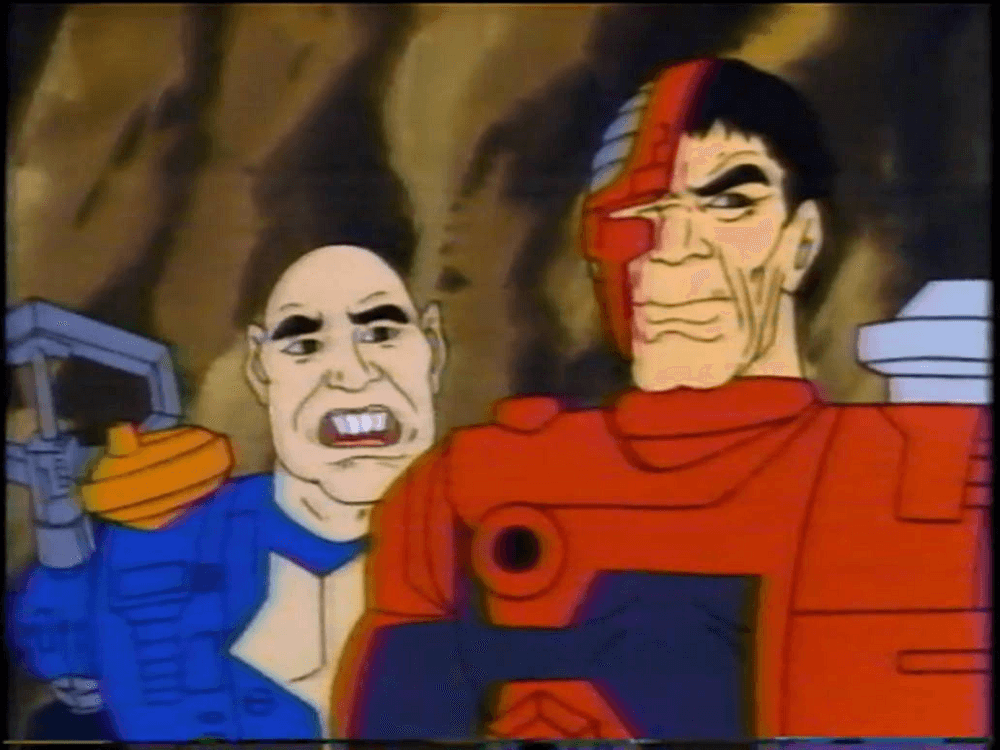
The mini-series was such a success that a full series of sixty episodes was ordered, with Ted Pedersen, Steve Perry, and Michael Reaves – who’d written the lion’s share of the mini-series – being joined by a huge cast of writers, including former Marvel Comics editor-in-chief Gerry Conway and He-Man mainstay Larry DiTillio. The sixty-five-episode total took the show to the point where no further episodes needed to be produced, with enough to air one every weeknight for three months, the minimum requirement for a show to be syndicated under its own steam.
The cartoon series introduced further additions to the Centurions team but there were no figures produced beyond the basic assortment of our three heroes, Doc Terror, and henchman Hacker. Ruby-Spears job was done, succeeding where Sectaurs had failed. 1985 had also saw them produce successful cartoon spin-off It’s Punky Brewster but it was very much back to boy’s toys in 1986, with two larger than life characters lending their likenesses to tempt the nation’s children into (controlled) violence…
Chuck Norris: Karate Kommandos (syndication, 1986): As well as producing Lazer Tag Academy for NBC, the Ruby-Spears machine ground out two very similar shows in 1986 as Sylvester Stallone and Chuck Norris both became children’s cartoon stars. The story of the unlikely transfer of world-weary PTSD sufferer John Rambo into cartoon form is told in The Telephemera Years: 1986 – part 4 but Norris’s story is just as strange (and with added Ks).
Karate Kommandos was Chuck’s idea, selling Ruby-Spears on the concept of him as an action hero for Saturday morning cartoons, albeit one with an emphasis on not using combat skills unless absolutely necessary. Polished by Dan DiStefano, the Karate Kommandos treatment saw Chuck head up a government agency tasked with stopping Claw and his VULTURE organisation. VULTURE, of course, was an acronym but quite what it stood for – Violent Underground League of Terror, Uprising, Revolution, and Extermination? – was never revealed, and Claw was aided in his evil mission by Super Ninja.

Standing in their way were Chuck himself, samurai Kimo, sumo Tabe, technology expert (and woman) Pepper, Pepper’s brother Reed (Chuck’s apprentice), and a child of uncertain heritage called Too Much. All wore a big K symbol on their outfits, with Tabe’s prominently displayed on his crotch, and over the initial five-episode mini-series they prevented VULTURE from kidnapping scientists, stealing a robot laser, and hacking a government satellite. The mini-series aired in syndication across five weeknights from September 15th 1986 and, if successful, it could be assumed that a full series would have followed. No such series did follow, despite each episode being top and tailed by a live-action sequence from Chuck, during which he would say his name an alarming amount of times.
There were no new Ruby-Spears shows on the docket for the Fall 1987 season, with the studio again being sold, this time to Carl Lindner Jr’s Great American Broadcasting, again in tandem with Hanna-Barbera. Police Academy: The Series and Superman (both 1988), Dink, the Little Dinosaur (1989), and Piggsburg Pigs! (for Fox in 1990) followed but it was clear that they heyday of the studio – with Joe and Ken winding down their involvement – was far behind them. In 1991, Ruby-Spears was spun-off into RS Holdings, with the library up to that point becoming part of Hanna-Barbera’s inventory, and although there was a brief renaissance with Wild West C.O.W.-Boys of Moo Mesa in 1993, the studio limped to a close in 1995 with just the syndicated Mega Man and Skysurfer Strike Force to add to its back catalogue
Joe Ruby and Ken Spears died within three months of each other in 2020, leaving behind a considerable legacy that began in the 1960s and hit its height in the 1980s, although they should always be remembered primarily for creating Scooby Doo, Where Are You! Their partnership with ABC in the 1970s and 1980s produced a cavalcade of fondly-recalled shows before the toy and syndication markets took hold, leading to sixty-five episodes of a cartoon about Rambo.
Check out our other Telephemera articles:
The Telephemera Years: 1966 (part 1, 2, 3, 4)
The Telephemera Years: 1968 (part 1, 2, 3, 4)
The Telephemera Years: 1969 (part 1, 2, 3, 4)
The Telephemera Years: 1971 (part 1, 2, 3, 4)
The Telephemera Years: 1973 (part 1, 2, 3, 4)
The Telephemera Years: 1975 (part 1, 2, 3, 4)
The Telephemera Years: 1977 (part 1, 2, 3, 4)
The Telephemera Years: 1980 (part 1, 2, 3, 4)
The Telephemera Years: 1982 (part 1, 2, 3, 4)
The Telephemera Years: 1984 (part 1, 2, 3, 4)
The Telephemera Years: 1986 (part 1, 2, 3, 4)
The Telephemera Years: 1987 (part 1, 2, 3, 4)
The Telephemera Years: 1990 (part 1, 2, 3, 4)
The Telephemera Years: 1992 (part 1, 2, 3, 4)
The Telephemera Years: 1995 (part 1, 2, 3, 4)
The Telephemera Years: 1997 (part 1, 2, 3, 4)
The Telephemera Years: 2000 (part 1, 2, 3, 4)
The Telephemera Years: 2003 (part 1, 2, 3, 4)
The Telephemera Years: 2005 (part 1, 2, 3, 4)
The Telephemera Years: 2008 (part 1, 2, 3, 4)
Titans of Telephemera: Irwin Allen
Titans of Telephemera: Stephen J Cannell (part 1, 2, 3, 4)
Titans of Telephemera: Hanna-Barbera (part 1, 2, 3, 4, 5)
Titans of Telephemera: Kenneth Johnson
Titans of Telephemera: Sid & Marty Krofft
Titans of Telephemera: Glen A Larson (part 1, 2, 3, 4)
Titans of Telephemera: Quinn Martin (part 1, 2)

